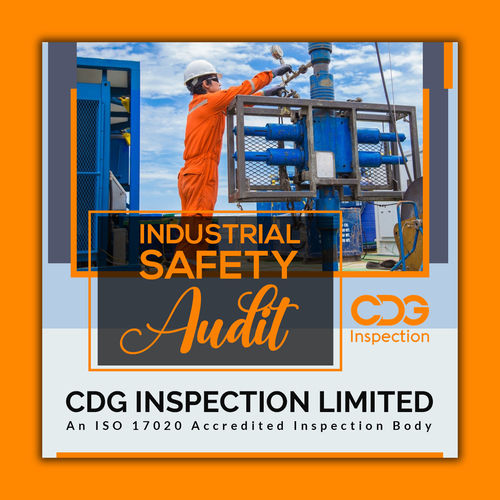Industrial Safety Audit In Faridabad
Product Details:
X
Product Description
CIL provides industrial safety audit in Faridabad. We are an ISO 17020 accredited inspection body. Companies should take note of the fact that workplace mishaps may have far reaching consequences in the long run. Without undermining the risk to human life itself, one should also consider the damage to machinery, equipment and property, leading to production delays, which can take a significant toll on business. This may adversely impact the commercial viability of a business. In the aftermath of an unfortunate incident, most companies are seen spending money on mobilising manpower and other resources to investigate causes and implement remedial measures to prevent such incidents from happening in the future. Industrial accidents and consequent deaths can be prevented. There is no doubt that the prevention efforts would lead to large gains, both in terms of human life and business profits. It may therefore be wise for businesses to consider a proactive approach in mitigating any crisis arising out of high risk operations. And this is where the need for a safety audit for high risk operations arises. What is a high risk operation safety audit, A high risk operation safety audit is an in depth audit of situations that could potentially cause serious injuries and harm to people and property and assists organisations in focusing on these activities. The audit actively looks at high risk activities, such as working at heights, confined space entry, lifting operations, ground excavation, electrical safety, fire safety management, contractor safety and specific areas, like molten metal. Also, leadership commitment and accountability, risk assessment and management and permit to work are reviewed in detail. The audit process involves a greater level of interaction with staff, site rounds and review of documentation. How does an audit for high risk industrial operations work, A high risk operation safety audit is a deep dive into the controls of hazardous activities and the effectiveness of existing safety initiatives related to the prevention of serious injuries. The audit is a quantified, customised approach that benchmarks an organisations current safety performance level concerning high risk activities against global best practices. A suitable and customised approach is created in an audit report form that meets the organisations requirements. The findings from the audit will give the organisation visibility of where they stand in terms of high risk activities, identifying opportunities for improvement. This is then followed by a consultancy that will help strengthen the areas that require attention through recommendations, knowledge sharing and training. The audit process requires active participation from all employees of the organisation. It is mainly divided into four key phases, Leadership commitment and planning, Implementation and operation, Performance monitoring and measurement, Evaluation and continual improvement, How companies with high risk operations can benefit from a safety audit, Studies have shown that occupational safety regulatory compliance is a necessity that must be addressed and integrated into routine business practice. This is especially true for businesses with high risk operations. Non compliance can expose enterprises and individuals to unnecessary injury, risk and liability questions. These issues can be prevented or at least identified and corrected through effective safety auditing. Going by the findings of a study that aimed to evaluate workplace safety performance and the impact of the safety auditing process, the benefits of auditing can be both tangible and intangible.Tell us about your requirement

Price:
Quantity
Select Unit
- 50
- 100
- 200
- 250
- 500
- 1000+
Additional detail
Mobile number
Email








